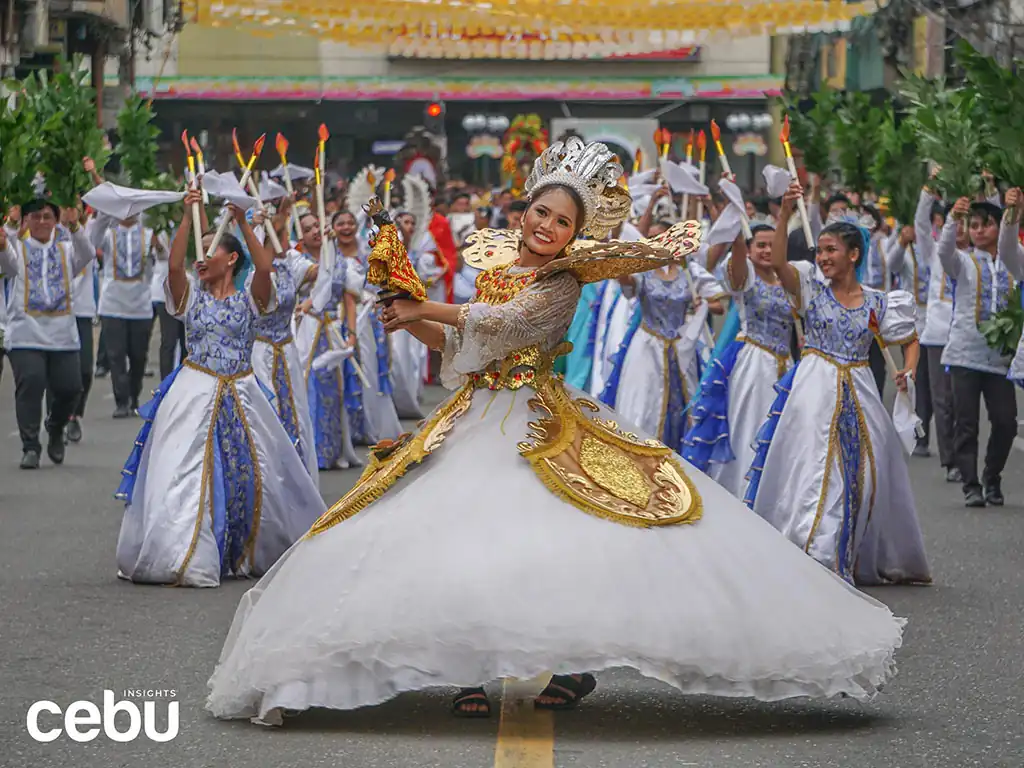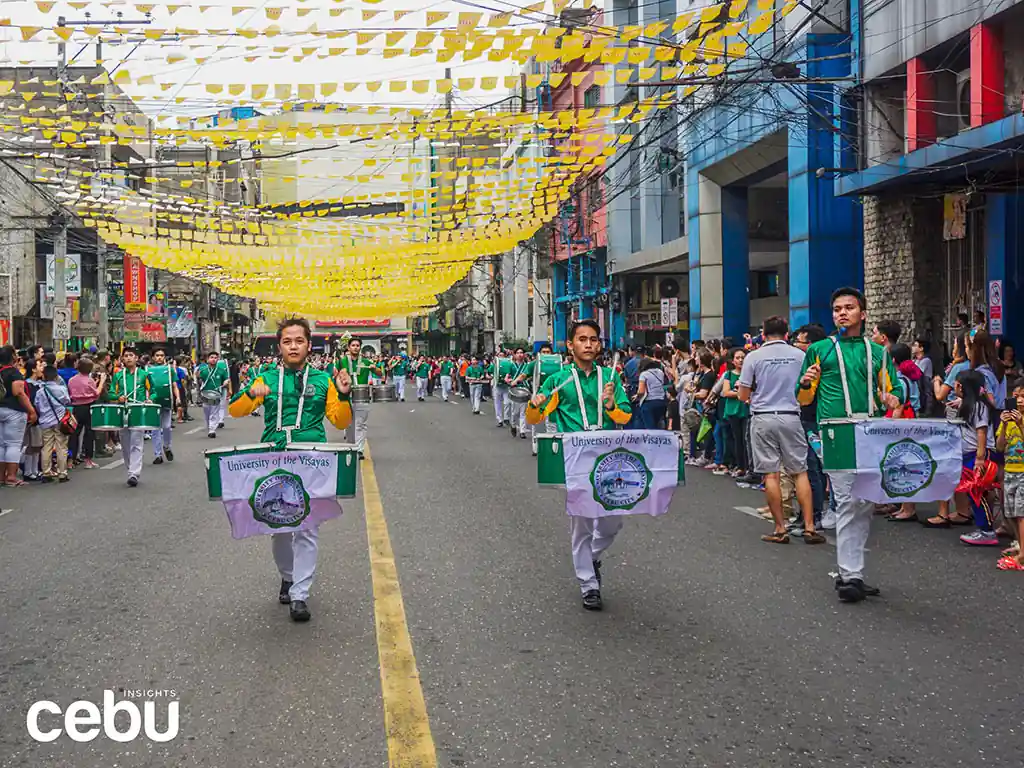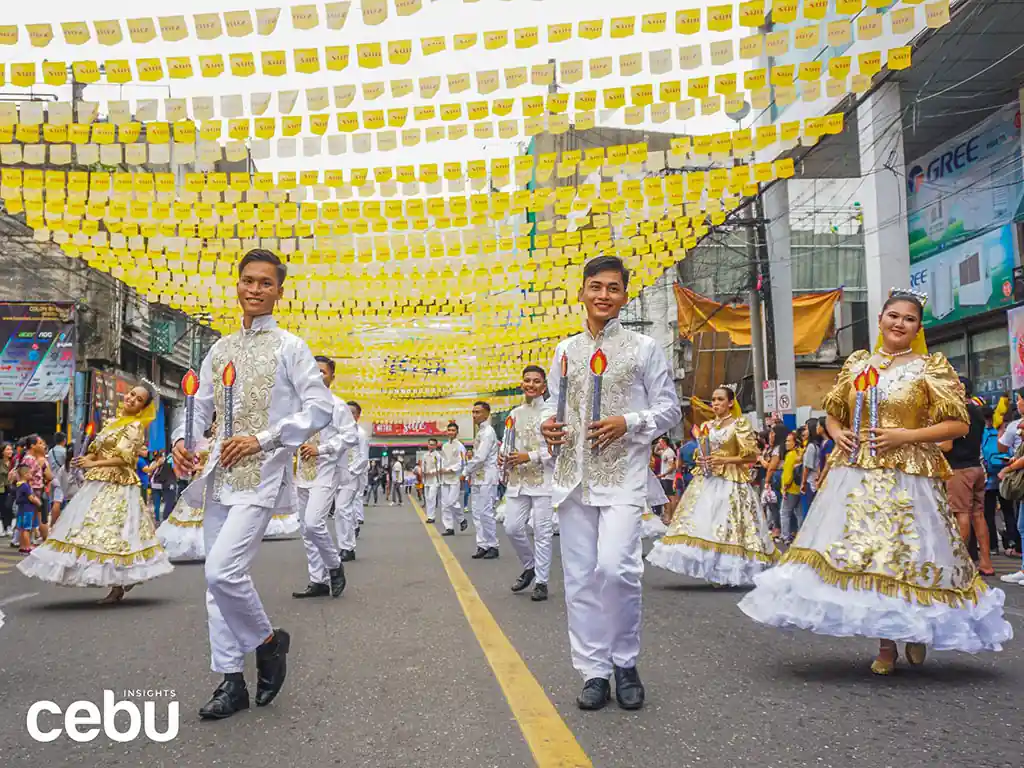Don’t miss the grandest celebration in Cebu – the Sinulog Festival!
Most people say that the Philippines has the longest celebration of the holiday season – starting from the “ber” months, as this is when people start playing Christmas songs and putting up decorations around their homes, up until New Year’s Day.
In Cebu, however, it’s a whole different story. Right after New Year’s, the festivities continue as Cebuanos prepare for the famous Sinulog Festival.
Christmas songs are replaced with the shouting of “Pit Senyor!” and the blowing of trumpets and horns. The fun and excitement of this festival can be seen everywhere in Cebu City.
WHAT IS CELEBRATED DURING SINULOG?
If you’re familiar with the festival, you must also know about the Sinulog Parade. It has generated the interest of millions of people, including local celebrities and tourists who visit Cebu just so they can join in on the celebration.
Sinulog dance choreography, costumes, and props are a year-long preparation for most contingents.
This festive event can be traced back to the year 1521, the year that marked the Christianization of the Philippines. By then, the country was a group of islands with different identities and leaders.
The discovery of Cebu by a Portuguese explorer named Ferdinand Magellan paved the way to Christianity in the country.
At the time, Queen Juana was given an image of the Infant Jesus of Prague by Ferdinand Magellan as a baptismal gift.
This was all before Magellan was killed by Lapu-Lapu, a chieftain of Mactan who resisted the colonizers.
HOW DID SINULOG START OUT?
Cebuanos enjoy watching dance performers parading the streets of Cebu City.
The first Sinulog was said to have originated when the adviser of King Humabon named Baladhay fell sick. In his grief, King Humabon ordered that Baladhay be brought to the room where he had enthroned the image, along with the other pagan gods of native Cebuanos.
A few days later, Baladhay was reportedly cured. That was probably the backdrop of the deep devotion and thanksgiving to the Holy Child, to whose name a lot of healing miracles have been attributed.
The word “Sinulog” is the same as “Sinug,” which roughly means “water current movement.”
This means that performers who will take part in the Sinulog dance are to become as graceful as the flow of water in the winding river. Over the years, the dance routine has always been two steps forward and one step back.
This can be seen in churches, especially in the Basilica Minore del Sto. Niño, where the original image that was given to Queen Juana is still enthroned.
The novena masses are a huge part of the Sinulog celebration.
There has always been “Sinug” dancing, mostly inside the Sto. Niño church. This can also be seen at the Magellan’s Cross, where women sell candles and offer to dance the “Sinug.”
The dance is performed through singing in groups, along with the chanting and shouting of “Pit Senyor!”
WHAT IS PIT SENYOR?
Pit Senyor is short for “panangpit sa Senyor” in Cebuano. In English it means “Call on the Child Jesus” or “Pray to the Child Jesus.”
Before the dancing begins, the “Sinug” dancer would ask for your name and your prayer-petition.
The dancer would then include in their dance-prayer your petition along with your name, so the chanting becomes “Pit Senyor, kang tatay kini,” or the equivalent name of the person asking for a petition.
Afterward, the candles used (and paid for by the customer) are lit at a certain portion outside the church and the customer continues to pray there, leaving with the candles still burning along with the others.
The dance steps inside or around the church are still the same basic steps – two steps forward and one step backward.
Every Friday, you will find people doing the Sinulog dance in Sto. Nino Church, where devotees go for the Novena and offer their prayers to the image of Sto. Niño.
Sinulog dance competitions are a sight to see because of the colorful costumes and setups.
This is now immortalized in the Sinulog Festival, which was first organized by David Odilao, the Regional Director of the Ministry of Youth and Development.
It drew the participation of schools, government offices, and private companies based in Cebu province. But now, contingents from Luzon, Visayas, and Mindanao – the three largest groups of islands in the Philippines – pay homage to Sto. Niño through their participation in the Sinulog.
The street-dancing route differs every so often depending on what the organizers believe would bring the most orderly event, as this particular part of the celebration is attended by millions of people spread throughout the whole route.
As in the past, whatever the route, people still come in droves, Filipinos and foreigners from different religions and cultures.
So far, the festival has been the grandest and most exciting celebration in this part of the country. The latest technology along with the helicopters are able to monitor the movement of people and help prevent untoward incidents.
However, not many people know that the Sinulog is not just about the parade or street dancing competitions. Sinulog is also packed with many other religious and cultural activities, all in different locations throughout Cebu.
Even Mandaue City is involved on the day of the Fluvial Procession, when the image of the Holy Mother is brought to the Shrine of St. Joseph and joins the Birhen sa Regla in a Fluvial Procession at the Mactan Channel.
This is part of the Sinulog celebration, which draws commercial boats, private yachts, outriggers, and motorized bangkas – jet skis with colorful buntings playing Sinulog music while passing through the short length of the channel.
One must remember that Cebu is the busiest port in the Philippines, with the majority of shipping companies being based in Cebu. As such, the Fluvial Procession gives locals a breath of fresh air in the highly urbanized center of Central Visayas.
Part of the fun and excitement is singing and dancing along to Sinulog music.
In Asia, the Sinulog is called the Mother of All Festivals.
It’s no wonder that long before the Sinulog Festival, airline bookings, hotel reservations, and tourist itineraries for Cebu destinations and nearby provinces start as soon as Cebuanos shout to the world “Merry Christmas” and “Pit Senyor” in the same breath of joy.











